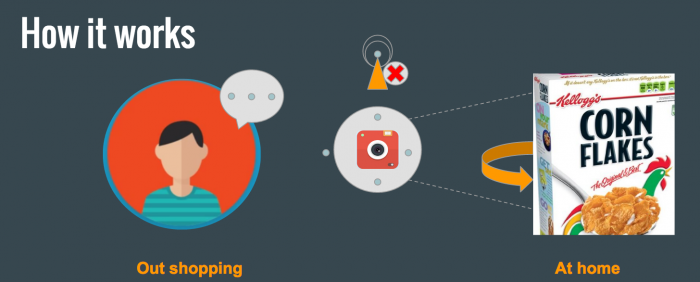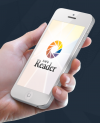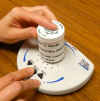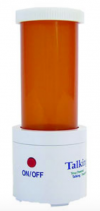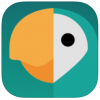Connected Devices/Projects/Lighthouse
| Project Lighthouse |
|---|
 |
| Early Device Concept |
| Author(s) |
| Mozilla |
| Released |
| 2016.09.28 (Initial Presentation Target) |
| Innovation Status |
| Gate 0 |
| Website |
Contents
Problem Overview
285 million people are estimated to be visually impaired worldwide - 39 million are blind and 246 million have low vision, according to the World Health Organization. Over 20 million people suffer from vision loss just in the US (10% of the adult population), according to The American Foundation for the Blind. 90% of the world’s visually impaired live in a low income setting. These discoveries have motivated us to kick off Project Lighthouse.
People who are visually impaired aspire to be more independent and able to perform their day-to-day tasks just like their visually able friends. They are currently managing these challenges in their lives by skipping an experience altogether or through reliance on caretakers, or braille & other accessibility devices & mediums.
Product Vision
Our vision is to enable every person with visual impairment to have equal access to everyday things and lead a more independent and fulfilling lifestyle.
People save memories & relive experiences or adventures by taking pictures, videos, audio recordings. With Project Lighthouse we are extending this natural behavior to create a simple product that would be both easy to use & affordable to own.
The product is equipped with a camera, mic & speaker to provide the visually impaired with the ability to quickly & efficiently tag household items (example: pantry items, clothing, medicines etc.).
Why hardware?
- To emphasize simplicity & ergonomics
- To enable optimized offline processing with no data connectivity
- To make it affordable
These devices are small & portable and can be used both at home & out. Users will simply take a picture/video of the item and then tag it with their voice. The device will save an image or a series of images and tag them with the users voice description.
The device requires no setup at all & starts working as soon as you switch it on. It has an optional wifi connectivity step only if you’d like for it to automatically receive software updates when and as they become available.
The goal of Lighthouse is to provide an easy to use, affordable, image matching solution to dramatically improve the lifestyle of those who are visually impaired.
How It's Used
To better understand, let’s elaborate with a scenario:
- Ernie who is blind takes lighthouse when he goes shopping at a local grocery store.
- Lighthouse is a battery powered & portable device. It is equipped with a camera, mic & speaker. It works completely offline
- Ernie picks up a box of cereal, takes an image/video & voice records the product details that are important to him in his local dialect & saves it locally on the device.
- A few days later, Ernie would like to eat cereal for breakfast.
- Ernie picks up the item from his pantry, uses lighthouse to take an image/video of the box.
- Lighthouse uses its image matching algorithm to match it with the image that he took while he was shopping & plays his custom voice description of the product, confirming that it is the cereal.
The next time the user is interested in identifying an item at home, they’d use this device to take a picture, which then uses its smart image matching algorithm to identify the match against a series of images, previously saved & tagged to identify the one they are looking at and automatically plays the custom voice description when it confirms the match.
Product Target Audience
The first phase of Project Lighthouse is targeted at people in the U.S. who are blind or live with vision impairment. Sale of this product in future phases has the potential to be targeted for the global blind population.
How It Works
Coming soon
Competition
Product Requirements Documentation
Coming Soon
Technical Documentation
Coming Soon
Project status
| Milestone | Date | Status | Links |
|---|---|---|---|
| Gate 0 approval | 10-28-2016 | Completed | Product Pitch |
| Prototype Development Completed | 9-28-2016 | Completed | |
| Prototypes Assembled | 11-04-2016 | Completed | |
| User Studies Completed | 11-18-2016 | Completed | |
| Data Synthesis Completed | 12-02-2016 | Completed | |
| Gate 1 Pitch Presentation | 12-08-2016 | Completed |
Brainstorming and Early Concepts
Coming October 14
User Studies
How to contribute
Contact the Lighthouse team on IRC, email or discourse channel
IRC
- Channel: #lighthouse
- Address: irc.mozilla.org
Mailing list
project-lighthouse-team@mozilla.com
Discourse
Project Lighthouse on Discourse
References
Team
- Oleg Zasypkin, Engineer
- David Teller, Engineer
- David Flanagan, Engineer (part-time assignment)
- Tamara Hills, Engineer
- Sam Foster, Engineer
- Hema Koka, Sr. Engineering Manager
- Preeti Sanketh, Product Manager
- Julie McCracken, Sr. Eng. Program Manager
